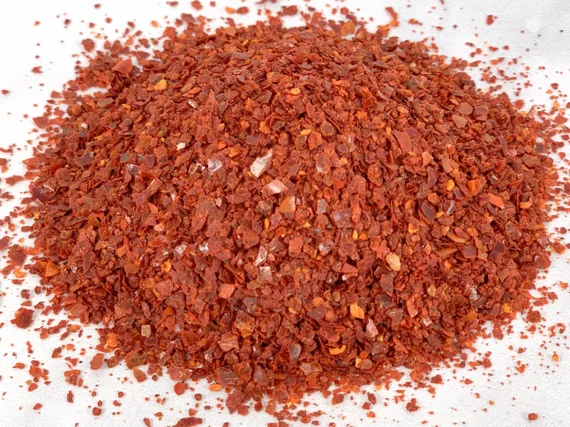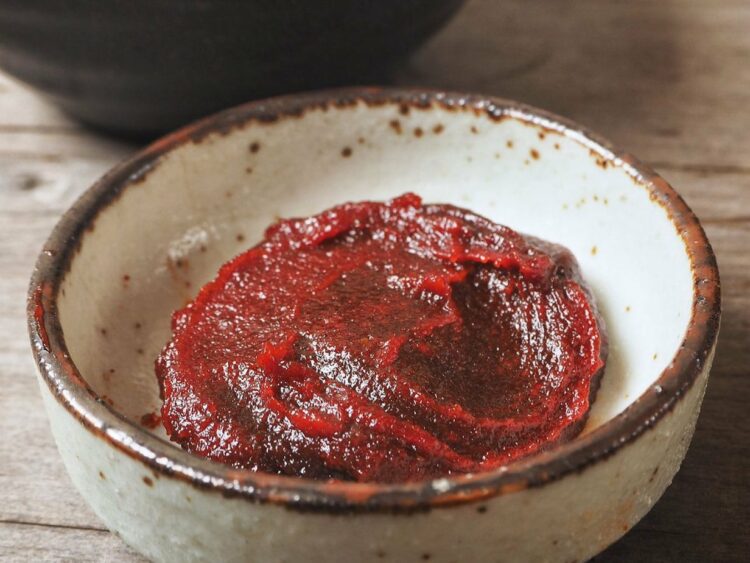It’s amazing how one ingredient can transform an entire cuisine. This is the story of a humble little red chili that changed Korea’s history. Without it, Korea wouldn’t have gochujang and gochugaru – two essential ingredients in today’s Korean cuisine.
Origin and production of gochugaru
Red chili peppers were unknown in Korea until Portuguese traders introduced them to East Asia in the 17th century. Once they reached Korea, they spread rapidly and became a staple ingredient. For example, they’re used in kalguksu.
Gochugaru is produced by sun-drying the chilies and then grinding them into a powder. Although much of this process has been modernized, many older Koreans still make gochugaru by hand.

How gochujang is made
To make gochujang, gochugaru is mixed with sweet rice flour, soybean powder, salt, and other region-specific ingredients. The paste is placed in a large earthenware vessel called an “Onggi” and left to ferment for about 2-3 months. After that, you have a thick, dark red paste that can be stored even longer if it remains in the onggi. Store-bought gochujang is made to stop fermenting, but homemade versions keep fermenting in the onggi, concentrating their flavors even more.
Benefits of gochujang and gochugaru
Gochujang and gochugaru can be spicy, but they are not as hot as some other chilies, such as the infamous “ghost” pepper. Although the heat level varies, gochujang typically measures between 1,500 and 10,000 Scoville units.

What I find most interesting about gochujang and gochugaru is their relatively mild, almost sweet undertones. Chinese spices often create a numbing sensation, but Korean spices deliver a gentle sweetness that I love. For anyone with a lower tolerance, this sweetness makes the heat easier to handle.
Like kimchi, gochujang and gochugaru are packed with nutrients, including protein, vitamin B2, vitamin C, and carotenoids. Many people say that spicy food is good for heart health, so adding a little of these ingredients to your cooking can help your heart without necessarily burning your tongue. Calorie-wise, gochujang is very light: about 30 calories per 100 g, and because it’s used as a seasoning, that’s a tiny amount.
Uses
These spices appear in almost every Korean dish. If you see a red color in a recipe, it probably contains gochujang or gochugaru, and sometimes both.
Dishes that feature these spices include sundubu jjigae (silken tofu soup), budae jjigae (Korean army stew), dakgalbi (spicy stir-fried chicken), and tteokbokki (spicy rice cakes). One dish became famous thanks to gochugaru, and that’s kimchi! Modern kimchi would not exist without this red chili paste and powder.
You can add gochujang and gochugaru to almost any dish to boost the flavor… I often stir some into fried rice or Korean vegetable pancakes. My favorite use is still Korean fried chicken.

Although this little red chili doesn’t look like much, it has completely changed the course of Korean cuisine since its introduction.
As more and more cultures discover gochujang and gochugaru, this chili seems poised to transform many other cuisines as well. Most recipes rely on gochujang, not gochugaru.

